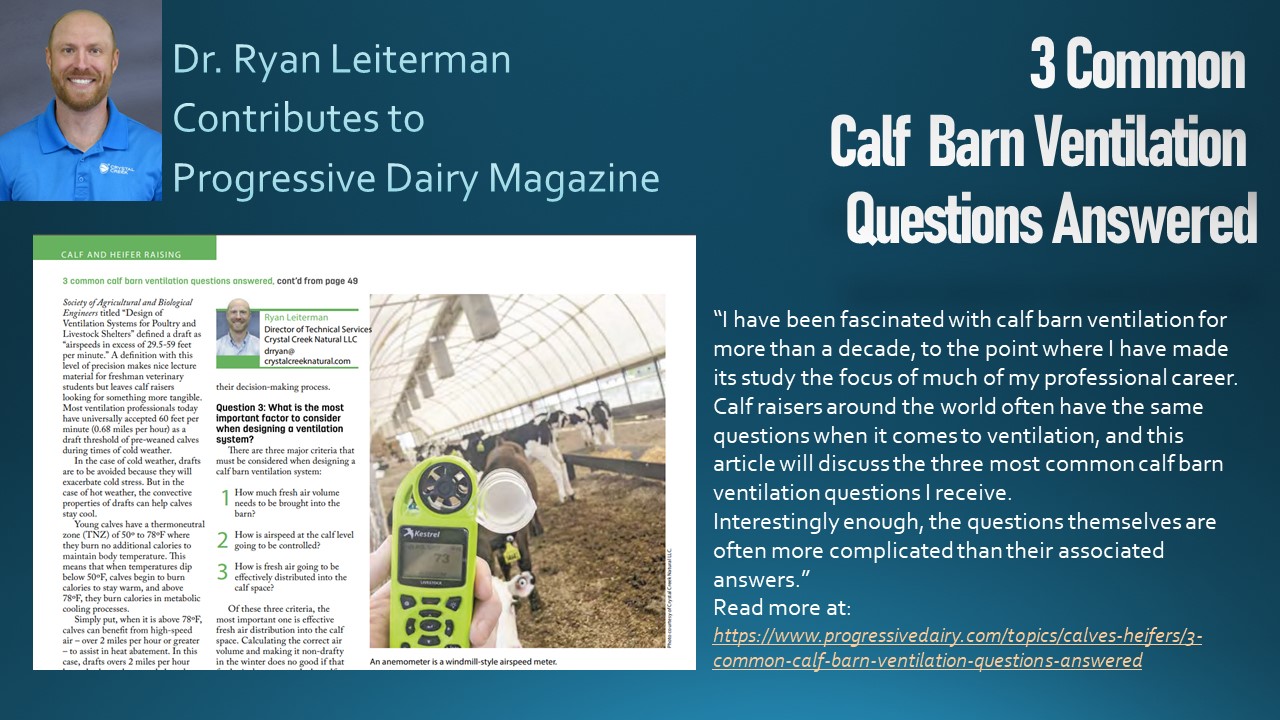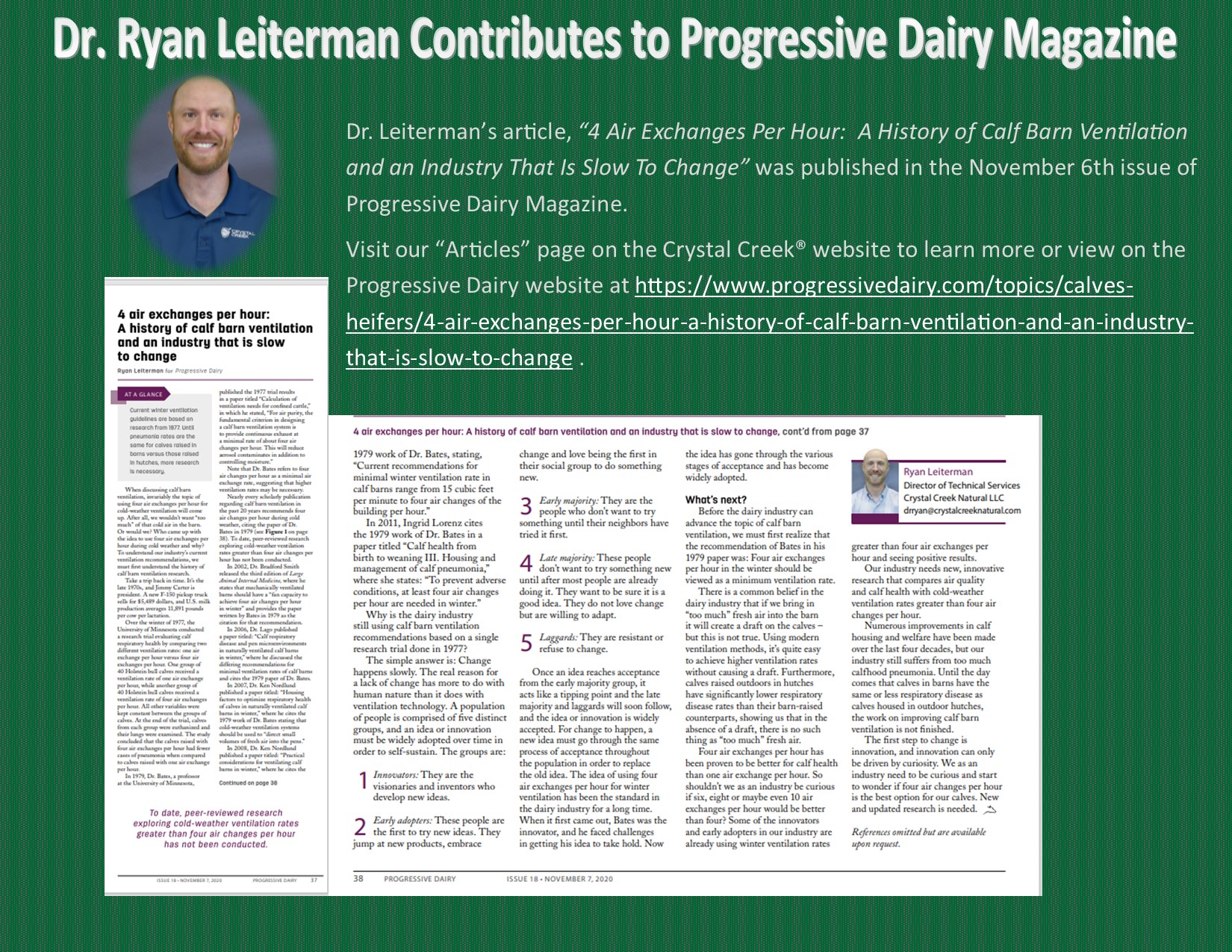Ventilating Repurposed Structures For Calf Housing
Click here to view as a pdf: Ventilating Repurposed Structures For Calf Housing
 By Alex Austin
By Alex Austin
Building a new calf raising facility is an expensive investment and not always an option. Converting an existing structure, whether it’s a pole shed or old stanchion barn, to house and raise calves can be a great option when done correctly. When considering repurposing an existing structure, a lot of thought goes into the logistics of everyday calf care, such as feeding and bedding, but one area that can be overlooked is proper ventilation. A poorly ventilated calf barn will quickly lead to struggles with calf health and poor performance. To avoid these and achieve proper ventilation, a system that can deliver fresh air in different penning set ups and overcome potential structural challenges is key. Read More →







